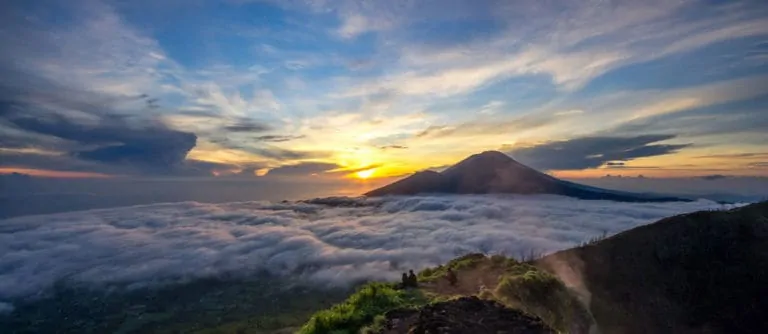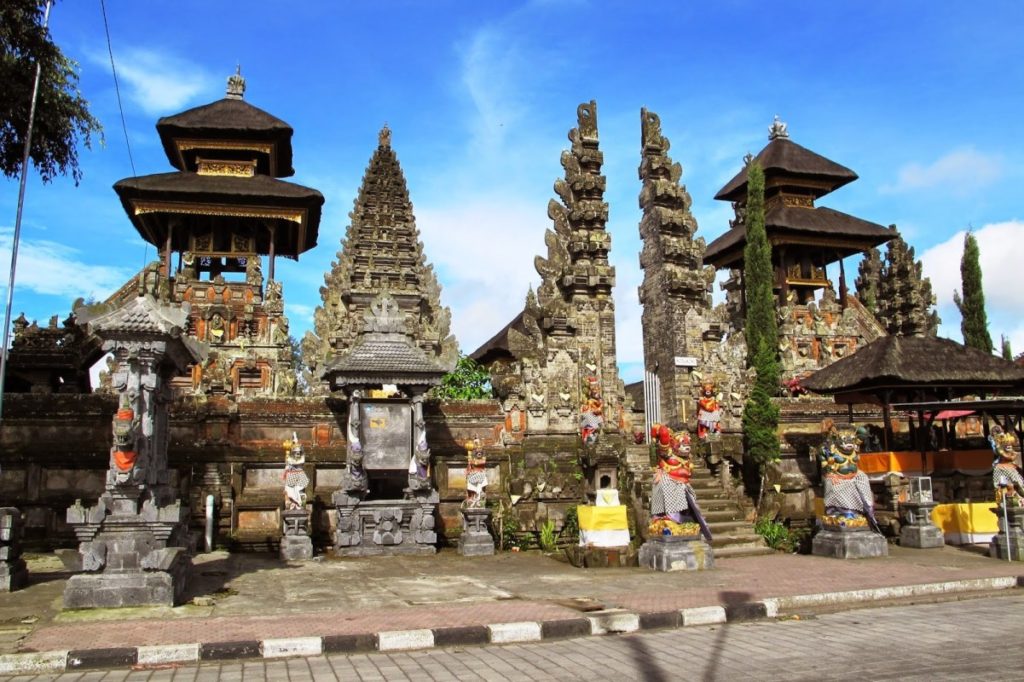
Kintamani is a village in the north of the island Bali in the Bangli district.
Location
The village of long stretched streets lies at an altitude of 1470 meters in the northern mountain of the island, on the main road from Bangli to Singaraja. On the western edge of the outer two calderas, the road offers views to the volcanic landscape of the 1717 meter high Gunung Batur, which is about six kilometers east. A curvy secondary road leading to the foot of the mountain branches eight kilometers southeast of Kintamani in Penelokan (1,450 meters) and leads down to the bottom of the caldera, 120 to 300 meters lower. The ascent and descent walk directly from Kintamani to the summit of Gunung Batur takes about six hours. Between both places and practically combined with Kintamani is the road settlement Batur.
The road from Kintamani in the north direction continues up to Penulisan, where the Pura Tegeh Koripan is located at 1745 meters, the highest temple of Bali.
The heavily clouded sky in the top of the hill gives a lot of precipitation. The fertile volcanic soils are used especially for cultivation of Arabica coffee.
Place
The Pura Ulun Danu Batur is a temple dedicated to Kintamani in 1927, originally located in the caldera. At the outbreak of the Batur volcano a year before, the old village was overburdened in the plain of lava mass and only the shrine was preserved, which forms the centre of the new temple complex.

History and culture
The place is known since the 9th century and belonged to the oldest kingdom in Bali. In surrounding villages like Tenganan, traditions of the mountain residents are still visible. The characteristics of the ancient culture are simpler temples, village land in common ownership, the lack of a typical caste system for Balinese Hinduism, and generally a lack of social hierarchy. The population around Kintamani was therefore often described as residual in ethnological descriptions of the 20th century. On the other hand, the large number of inscriptions found in this region shows that the rulers of the early kingdoms were strongly influenced by the Hindu culture of Java. It was not until the 14th century that a cultural stagnation could have taken place.
Literature
- Samuel Wälty: Kintamani. Village, country and rituals. Development and Institutional Change in a Mountain Region in Bali. (Culture, Society, Environment – Fonts for South Asia and Southeast Asia Research, vol. 1). Lit-Verlag, Münster 1997, ISBN 3-8258-32643



